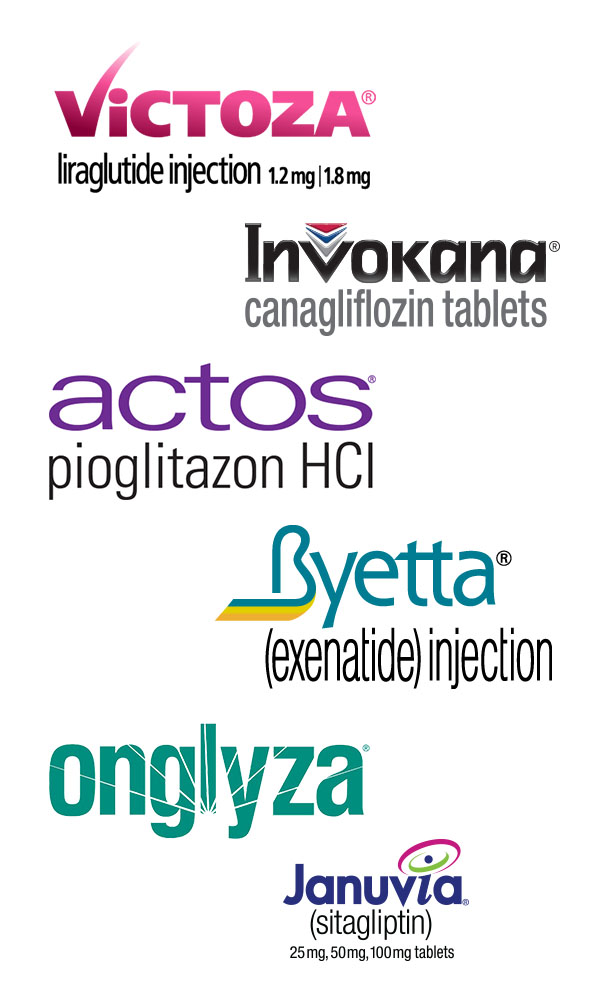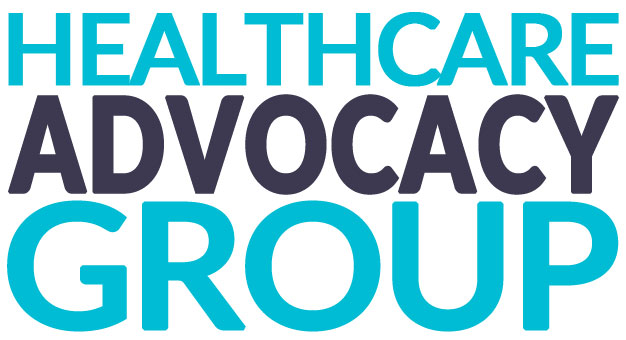WHAT ARE DIABETES DRUGS IS USED FOR?
Diabetes Drugs & Health Dangers
The rate of diabetes in the United States and Western Countries has grown by leaps and bounds in recent decades. In fact, reports show diabetes rates have risen by nearly 50% in women and 75% in men since 1980. And with that increase comes a bevy of new medications targeted to treat the condition in countless different ways.

Reports estimate the FDA has approved more than 72 drugs for diabetes since the early 1980s and there are now more than 170 different variations on the market!
And while these drugs have ballooned the profits of drug companies and their shareholders, there’s an increasing trend of independent research and FDA warnings linking them to serious health risks.
In just the past 10 years, reports have linked diabetes drugs with:
- Heart risks
- Bladder cancer
- Joint pain
- Kidney disease
- Pancreatitis
- Pancreatic cancer
- Thyroid cancer
- Ketoacidosis
- Toe or foot amputation
- Urinary tract infections
- Decreased bone density.
Here, we’ll take a more in-depth look at the current market for diabetes drugs, the risks that come with them, and alternatives for those dealing with the condition.
Types of Diabetes
Diabetes was one of the first diseases known to man, dating back to ancient times when it was described in Egyptian manuscripts.
However, it wasn’t until at least 500 AD that doctors first differentiated between type 1 and type 2 diabetes.
In the 1600s, the condition was renamed diabetes mellitus. Mellitus means “from honey”, and gets its name from the sweet smell of the urine from those with the condition due to the high sugar content.
Today, there are numerous types of diabetes, including:
- Type 1 Diabetes – A chronic condition that usually develops in childhood in which the body does not produce enough insulin. About 5-10% of all diabetes cases.
- Type 2 Diabetes – A condition that generally develops in adults in which there is high blood sugar, low insulin or a resistance to insulin. Around 90% of cases.
- Gestational Diabetes – A condition that surfaces in 3-9% of all pregnancies in which a mother who didn’t previously have diabetes develops high blood sugar and a resistance to insulin.
- Impaired Glucose tolerance – A form of pre-diabetes in which patients develop short-term high blood sugar levels due to resistance to insulin. Affects 10-15% of adults in the U.S. and may occur several years before type 2 diabetes.
- Impaired fasting glycaemia – Another form of pre-diabetes in which a patient’s blood sugar levels are elevated even when they are fasting, signifying a resistance to insulin. Can develop into clinical diabetes over years.
HOW DIABETES DRUGS WORKS?
Doctors in Medieval times developed the first treatment for patients with diabetes, consisting of a mixture of the lupine flower and the herbs fenugreek and zedoary. The concoction was found to help lower the production of blood sugar in the digestive tract.
Purified Insulin
In 1920, scientists Frederick Banting, Charles Best and Bertram Collip from the University of Toronto first started harvesting and purifying insulin from the pancreas of dogs and cows in order to conduct tests on animals with diabetic-like symptoms.
In 1922, those scientists became the first to treat a child with insulin, when 14-year old Leonard Thompson of Toronto was given an insulin injection that reversed the grave condition of his diabetes.
Banting would go on to win the Nobel Prize for Physiology or Medicine for his work, and eventually gave away his patent to insulin so that it could be mass-produced. By 1923 the pharmaceutical company Eli Lilly had begun production of insulin for use in patients all across Canada and the United States.
1922 was also an important year in the development of treatments for type 2 diabetes as French scientists would discover Metformin. However, the work was forgotten until the late 1950s when researchers in Europe began studying it again and it became readily available in the United Kingdom.
Metformin was finally approved by the FDA for sale in the United States in 1994. In 2002, the FDA approved Avandia, the first non-insulin or non-metformin based medication for the treatment of type 2 diabetes.
Diabetes Drugs
In the short time Invokana (Canagliflozin) has been on the market, FDA officials have issued at least 5 reports or warnings linking it to dangerous and potentially fatal side effects.
Classes & Brands
In just 2 short decades, treatment options for type 2 diabetes have grown from just a few options – insulin, metformin and sulfonylureas – to more than 100 different drugs in at least eight different categories.
Each class of diabetes drug treats the disease in a unique way, and each has its own advantages and disadvantages. Therefore, patients should become familiar with their options and talk with their doctor about the best treatment for their condition.
GLP-1 receptor agonists were first approved by the FDA in 2005 and are among the most widely-prescribed drugs for type 2 diabetes. Some are taken orally while others are injected, and they can last from 1 day to a week.
GLP-1 agonists work by boosting production of the hormone protein Glucagon-like peptide-1 that in turn prompts the body to produce more insulin.
- Byetta
- Victoza
- Trulicity
- Bydureon
- Lyxumia
- Tanzeum
- Ozempic.
Unfortunately, GLP-1 drugs have been linked to pancreatitis and pancreatic cancer in some studies.
DPP-4 inhibitors, like GLP-1 agonists, are part of a larger class of type 2 diabetes drugs called incretin mimetics. However, they differ from GLP-1s in that they are taken exclusively by mouth. And, instead of promoting more GLP-1 protein production directly, they block an enzyme called Dipeptidyl peptidase-4 that normally deactivates GLP-1.
The effect of these drugs is similar in that they promote insulin production and slow glucose from being absorbed into the blood.
- Januvia
- Janumet
- Tradjenta
- Onglyza
- Nesina.
Like the GLP-1 incretin mimetics, DPP-4 drugs have also been linked to a number of serious health concerns, including heart failure, joint pain, inflammatory bowel disease and pancreatic cancer.
Like the GLP-1 incretin mimetics, DPP-4 drugs have also been linked to a number of serious health concerns, including heart failure, joint pain, inflammatory bowel disease and pancreatic cancer.
- Invokana (canagliflozin)
- Farxiga (dapagliflozin)
- .Jardiance (empagliflozin).
Unfortunately, SGLT2s have also been linked to serious health risks in recent years, such as kidney damage, ketoacidosis, lower limb amputations, urinary tract infections and bone fractures.
Insulin is the required treatment for patients with type 1 diabetes. It is often also used by those with gestational diabetes, as well as those with type 2 diabetes that don’t respond to other treatment options.
As such, it makes up the majority of the diabetes drug market. Insulin is almost always injected, since it is neutralized by the stomach if taken orally. There are also versions that can be inhaled as a powder.
While insulin treatments were historically derived from the pancreas of cows, pigs, horses or fish, these have been almost completely replaced in the United States by biosynthetic versions of human insulin called insulin analogues. Insulin analogues are categorized based on how quickly they take effect and how long they last.
Rapid-acting insulin analogues usually start working within 10 to 30 minutes but only last for between 1 to 5 hours.
- Humalog (insulin lispro)
- Novolog (insulin aspart)
- Apidra (insulin glulisine).
Short-acting insulin analogues, or regular insulin, can take effect within 30 minutes to 1 hour from injection, and last from 2 to 8 hours.
- Humulin R
- Novolin R
- Regular insulin.
Intermediate-acting insulin takes effect after about 1 – 2 hours, and last for 18 to 24 hours.
- Insulin isophane
- NPH insulin
- Humulin N
- Novolin N.
Long-acting insulin analogues have seen much improvement in recent years, and can now take effect in as little as 30 minutes while lasting up to 42 hours. These are usually used along with a short-acting insulin around meal times.
- Basaglar (insulin glargine)
- Lantus (insulin glargine)
- Toujeo (insulin glargine)
- Levemir (insulin detemir)
- Tresiba (insulin degludec).
Premixed analogues are combinations of intermediate and short-acting insulin in one formulation, with the label describing the percentage of each. These are designed to provide rapid onset with longer effectiveness. They can take effect in as little as 10 minutes and last up to 24 hours.
- Humulin 50/50
- Humulin 70/30
- Novolin 70/30
- Novolog 50/50
- Novolog 70/30
- Humalog 50/50
- Humalog 75/25.
Finally, a new rapid-acting inhaled insulin analogue called Afrezza was recently approved that allows patients to forgo injections around meal times as long as they have also taken a long-acting insulin. It can work in as little as 15 minutes and last for up to 3 hours.
Sulfonylureas are a class of drugs first discovered in the 1950s that have been used for decades to treat type 2 diabetes. These compounds promote the beta cells in the pancreas to release more insulin, as long as it is still being produced.
Due to their propensity toward certain side effects, the first generation of sulfonylureas have been largely updated and replaced by second-generation formulations.
However, certain side effects like low blood sugar, weight gain, gastrointestinal distress and headaches are still associated with these drugs and their use is limited. Some common sulfonylureas include:
- Glucotrol
- Amaryl
- Diamicron
- Glurenorm
- Gliben-J
- Daonil
- Diabeta
- Glidanil
- Glynase.
Thiazolidinediones, also known as glitazones, are a class of drugs first introduced in 1999 that were extremely popular in the treatment of type 2 diabetes until recent years.
They work by lowering the amount of fatty acids in the bloodstream, thereby prompting the body to burn excess glucose for energy.
Two thiazolidinediones that were widely used around the world are:
- Actos (pioglitazone)
- Avandia (rosiglitazone).
However, the sale of both drugs was restricted in the United States or Europe in recent years due to health concerns. Avandia was initially linked to heart attacks and cardiovascular injuries but recently relisted by the FDA. Actos was linked to bladder cancer and heart attacks, leading to bans in France and Germany.
Alpha-glucosidase inhibitors are oral medications for the treatment of type 2 diabetes that block the action of the alpha-glucosidase enzymes in the small intestine.
This reduces the digestion and absorption of carbohydrates and simple sugars into the bloodstream that can raise glucose levels.
The use of these drugs is limited in the United States in comparison to other diabetes treatments since they are considered less potent at lowering blood sugar in the Western diet. The most commonly used drugs are:
- Precose (acarbose)
- Glyset (miglitol)
- Basen (voglibose).
Meglitinides are a class of drug prescribed to treat type 2 diabetes that were first introduced in 1997. They work by binding to and promoting potassium in the cells of the pancreas, thereby increasing the production of insulin.
Meglitinides have been associated with weight gain and low blood sugar, however not to the same extent as sulfonylureas. Repaglinide has also been shown to cause cancer of the thyroid and liver in test animals.
The most popular forms of meglitinides include:
- Prandin (repaglinide)
- Starlix (nateglinide)
- Glufast (mitiglinide).
Metformin, which is the only drug in the biguanides class still used, is one of the oldest and most widely used drugs in the world for type 2 diabetes. Due to its effectiveness, low price and positive tolerance in most patients, it is considered a first line drug for diabetes and is among the drugs on the World Health Organization’s List of Essential Medicines.
Metformin works by inhibiting the production of glucose in the liver and making the rest of the body more sensitive to the effects of insulin.
While it has minor side effects of diarrhea, nausea, abdominal pain and low blood sugar, it has also been shown to have positive effects on cardiovascular disease and the ability to fight cancer.
Some of the more popular versions of Metformin sold in the United States include:
- Glucophage
- Glucophage XR
- Riomet
- Diabex
- Carbophage
- Diaformin
- Glumetza
- Fortamet.
In addition, metformin is often combined with other type 2 diabetes drugs to form new compounds such as Janumet, Kombiglyze, Avandamet and Kazano.
Diabetes Drug Cancer
Several top-selling drugs for the treatment for type 2 diabetes have been linked to cancer in the past ten years.
In June of 2011, researchers with the French Medicines Agency discovered data showing use of the drugcould increase risks for bladder cancer by 40 percent. The FDA followed in September 2011 with a warning for U.S. consumers of the same cancer risk.
The drug was subsequently banned in France and Germany. Then, in May of 2012, additional research published in the British Medical Journal showed that use of Actos for longer than a year could lead to a 83% higher rate of bladder cancer.
Beginning in 2007, the FDA warned of an increased risk of pancreatitis in patients taking incretin mimetic drugs like Januvia and Byetta. Then, in 2011, research from UCLA found the drugs may be associated with a nearly 3-fold increase in the risk of pancreatic cancer.
In 2013, the Journal for the American Medical Association released a Johns Hopkins study also showing that incretin mimetic drugs could raise the chances for pancreatitis and pancreatic cancer.
That same year, the British Medical Journal accused the makers of incretin drugs of concealing important data that could prove whether or not a cancer risk existed.
In 2014, the issue was seemingly resolved when the FDA released its own study showing incretin drugs did not cause pancreatitis or pancreatic cancer in test animals.
However, last October, the dangers were reexamined in a large-scale European study of more than 550,000 diabetes patients, with data showing those who used incretin drugs were 3.35 times as likely to develop pancreatic cancer in the first few months of treatment.
On February 18, 2011, the journal Gastroenterology published a 5-year study of adverse events suffered by patients taking the incretin mimetics Januvia or Byetta.
Data showed those taking Januvia were 148% more likely to develop thyroid cancer, while those taking Byetta had a 473% higher risk of developing thyroid cancer.
SYMPTOMS & SIDE EFFECTS OF DIABETES DRUGS
Major risks of diabetes drugs.
Diabetes Drug Ketoacidosis
In May 2015, the U.S. Food and Drug Administration warned doctors and patients taking the SGLT2 diabetes drugs Invokana, Jardiance or Farxiga of a higher-than-normal risk for the blood condition ketoacidosis.
Diabetic ketoacidosis occurs when the body burns fat rather than sugar for energy during times of low insulin. This results in high amounts of acid, called ketones, in the blood, which can cause an array of health problems such as trauma, infections and higher risk of death.
According to FDA Adverse Event Reports, the agency has received 2,974 reports so far of patients suffering ketoacidosis or blood-related acidosis while taking Invokana.
Diabetes Drug Amputation Risks
On May 16, 2017, the FDA warned that patients taking SGLT2 diabetes drugs like Invokana may also have twice the risk of lower limb amputations, including the toe, foot or lower leg, due to increased risks of infections and gangrene.
The warning was based on the CANVAS study of more than 10,000 patients completed in 2017, which found as many as 7.5 out of every 1,000 patients taking Invokana were at risk of amputations.
Diabetes Drug Heart Risks
In April 2016 the FDA warned that the DPP-4 incretin drugs Onglyza and Nesina may raise the likelihood of heart failure, especially in patients with a history of kidney or heart injury.
The FDA’s health alert came after a 2013 study of more than 16,000 patients, which was published in the New England Journal of Medicine, found those taking the drugs had double the risk of heart failure.
So far, the FDA’s side effect reporting database has received more than 600 reports of patients suffering heart failure or death after taking Onglyza or Nesina.
In 2007, an expansive study from the Cleveland Clinic identified higher heart attack risks in patients taking the diabetes drug Avandia. Following several years of investigation the FDA eventually issued health warnings and restricted availability of the drug in 2010.
In 2013, the FDA issued a new statement saying that it was lifting the restrictions on Avandia use based on a new analysis of the data that did not show higher risks of heart attacks. However, use of the drug remains very low due to competition from newer treatment options.
LATEST DIABETES DRUGS NEWS & RECALLS
As the market for diabetes medications continues to grow, researchers discover new ways to fight the disease. Here are some of the medications slated for release in 2018 or the coming years:
This newly released drug will combine the GLP-1 receptor agonist lixisenatide with the basal insulin analogue glargine. There are also plans for a combination drug mixing liraglutide with the insulin degludec.
This new SGLT-2 inhibitor, also known as ertugliflozin, is a once per day oral medication for the treatment of type 2 diabetes approved by the FDA in January 2018.
A potentially revolutionary new drug still in clinical testing, sotagliflozin is a dual inhibitor of both SGLT-1 and SGLT-2. It is designed to be taken orally and could treat both type 1 and type 2 diabetes.
Researchers at the University of North Carolina are working on this so-called smart insulin, which activates only when it senses glucose levels have risen.
This new class of medications seeks to regulate glucose and insulin production by using the enzyme glucokinase, which is essential in sensing changes in blood sugar levels. Researchers hope to develop these drugs for both type 1 and type 2 diabetes.
Lawsuits & Settlements
Avandia, Actos, Incretins, SGLT2s & Onglyza.
Following warnings from researchers and the FDA over the heart and stroke risks of the drug Avandia from 2007 to 2010, thousands of injured patients filed lawsuits against British drug maker GlaxoSmithKline. In 2011 and 2012, the company paid more than $1.5 billion to settle approximately 35,000 cases alleging heart attack or stroke.
Following warnings in 2011 from the European Medicines Agency, FDA and Health Canada of bladder cancer risks, nearly 4,000 patients filed Actos lawsuits against the manufacturer Takeda Pharmaceuticals.
Following jury awards of more than $40 million to victims in several trials, Takeda agreed to pay more than $2.4 billion in 2015 to settle claims for those injured or killed.
In 2013, the federal Judicial Panel on Multidistrict Litigation created a special venue to handle a growing number ofalleging pancreatic cancer from incretin mimetic drugs like Jardiance, Byetta, Trulicity, Tradjenta and Victoza.
The case is known as MDL -2452, IN RE: Incretin-Based Therapies Products Liability Litigation. At the present time, there are more than 950 lawsuits pending in this court awaiting trial, with more expected to be filed.
In 2014, AstraZeneca agreed to settle approximately 84 claims alleging pancreatitis or pancreatic cancer from the drug Byetta that were filed in a California state court.
Following FDA warnings of increased risks for kidney damage and ketoacidosis for the SGLT2 drugs Invokana, Farxiga and Jardiance; and amputation risks for the drug Invokana, more than 1,100 patients have filed lawsuits against the manufacturers for injuries.
The JPML subsequently consolidated all Invokana lawsuits into MDL 2750, which is formally known as IN RE: Invokana (Canagliflozin) Products Liability Litigation.
All lawsuits alleging injury from Farxiga have been consolidated to MDL 2776, known as IN RE: Farxiga (Dapagliflozin) Products Liability Litigation.
After warnings from the FDA and New England Journal of Medicine that patients taking the diabetes drugs Onglyza or Nesina may have two times the risk for heart failure, many patients that had been hospitalized with no warning from the drug makers filed lawsuits.
These cases have since been consolidated to the Eastern Federal District of Kentucky in a dedicated Onglyza liability court called MDL 2809, or IN RE: Onglyza (Saxagliptin) and Kombiglyze XR (Saxagliptin and Metformin) Products Liability Litigation. At the present time there are approximately 100 lawsuits pending in this court.
Natural Alternatives to Diabetes Drugs
While there is no known cure for diabetes, and type 1 diabetes must be regulated with insulin, there are a number of steps patients can take to minimize the effects of the disease.
These include natural alternatives that have similar blood sugar reducing characteristics, as well as lifestyle changes that can delay or reverse the onset of type 2 diabetes altogether.
Studies have shown that the Maitake mushroom, known as Grifola frondosa, contains natural levels of the alpha glucosidase inhibitor, and therefore can aid in the reduction of blood sugar levels.
Likewise, Salacia oblonga is a shrub plant native to India and Sri Lanka that is used in traditional medicine to treat diabetes. Studies have shown that taking salacia extract after a meal high in carbohydrates can help reduce blood sugar levels.
For patients with diabetes, the biggest impact they can make towards reducing the effects of their condition, however, are by making certain lifestyle changes. Here are 5 areas that can have a long-term improvement on diabetes.
Dropping just a little weight can significantly reduce the risk of type 2 diabetes or reverse the onset of the disease.
Focus on diets high in whole grains, vitamins and leafy greens, as well as fewer carbohydrates, processed foods, salt, alcohol and red meat.
Regular exercise helps fight obesity, one of the known causes of type 2 diabetes. It also helps the effectiveness of insulin, increases heart health and reduces blood pressure and glucose levels.
During times of high stress, your body will raise adrenaline, which in turn increases blood sugar levels, blood pressure and the risk of heart disease. Also, stress often leads to unhealthy diets, alcohol use or smoking.
Joining a group to help reach goals and maintain healthy diet and exercise practices can keep you on track and committed. This is especially true if someone you live with agrees to make lifestyle changes at the same time.
Legal Assistance
If you or a loved one has been injured, you can speak to a lawyer about your case for free. You will potentially be able to seek compensation for your pain and suffering, costs, and medical bills. It is important to seek the help of an attorney as soon as possible.







